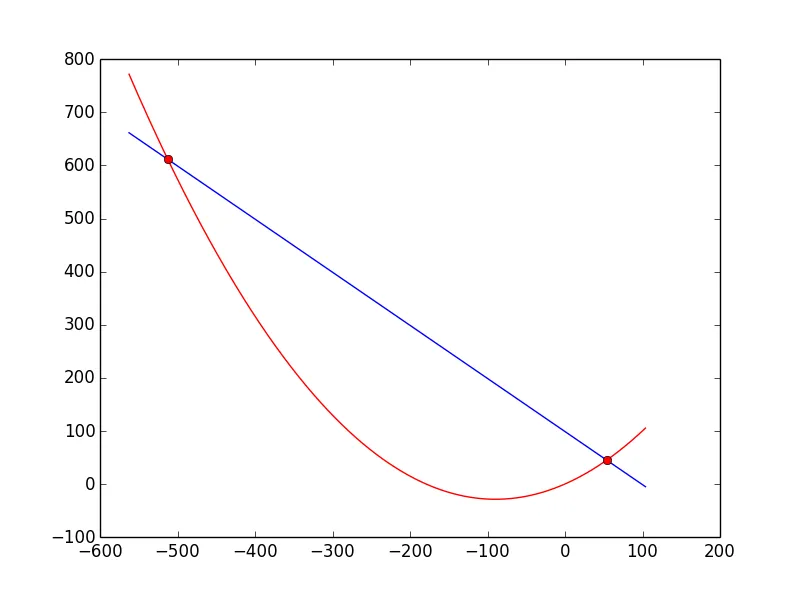这似乎很简单,但我还是无法完全理解。我有一个由x,y数据计算出的曲线。然后我有一条直线。我想找到这两者相交的x,y值。
到目前为止我得到了以下结果。它非常混乱,也没有给出正确的答案。我可以查看图形并找到相交的x值以及计算正确的y值。我希望能消除这种人工操作。
import numpy as np
import matplotlib.pyplot as plt
from pylab import *
from scipy import linalg
import sys
import scipy.interpolate as interpolate
import scipy.optimize as optimize
w = np.array([0.0, 11.11111111111111, 22.22222222222222, 33.333333333333336, 44.44444444444444, 55.55555555555556, 66.66666666666667, 77.77777777777777, 88.88888888888889, 100.0])
v = np.array([0.0, 8.333333333333332, 16.666666666666664, 25.0, 36.11111111111111, 47.22222222222222, 58.333333333333336, 72.22222222222221, 86.11111111111111, 100.0])
z = np.polyfit(w, v, 2)
print (z)
p=np.poly1d(z)
g = np.polyval(z,w)
print (g)
N=100
a=arange(N)
b=(w,v)
b=np.array(b)
c=(w,g)
c=np.array(c)
print(c)
d=-a+99
e=(a,d)
print (e)
p1=interpolate.PiecewisePolynomial(w,v[:,np.newaxis])
p2=interpolate.PiecewisePolynomial(w,d[:,np.newaxis])
def pdiff(x):
return p1(x)-p2(x)
xs=np.r_[w,w]
xs.sort()
x_min=xs.min()
x_max=xs.max()
x_mid=xs[:-1]+np.diff(xs)/2
roots=set()
for val in x_mid:
root,infodict,ier,mesg = optimize.fsolve(pdiff,val,full_output=True)
# ier==1 indicates a root has been found
if ier==1 and x_min<root<x_max:
roots.add(root[0])
roots=list(roots)
print(np.column_stack((roots,p1(roots),p2(roots))))
plt.plot(w,v, 'r', a, -a+99, 'b-')
plt.show()
q=input("what is the intersection value? ")
print (p(q))
有什么办法可以让这个工作起来吗?
谢谢。

np.polynomial.polynomial.polyfit返回系数[A, B, C],对应的多项式为A + Bx + Cx^2 + ...,与np.polyfit(你最初使用的函数,@user2843767)返回的顺序相反:... + Ax^2 + Bx + C。不确定是谁做出了这个决定,只是不要直接使用第一个输出并在np.poly1d或np.polyval中使用,除非你也使用了np.polyfit。 - askewchan